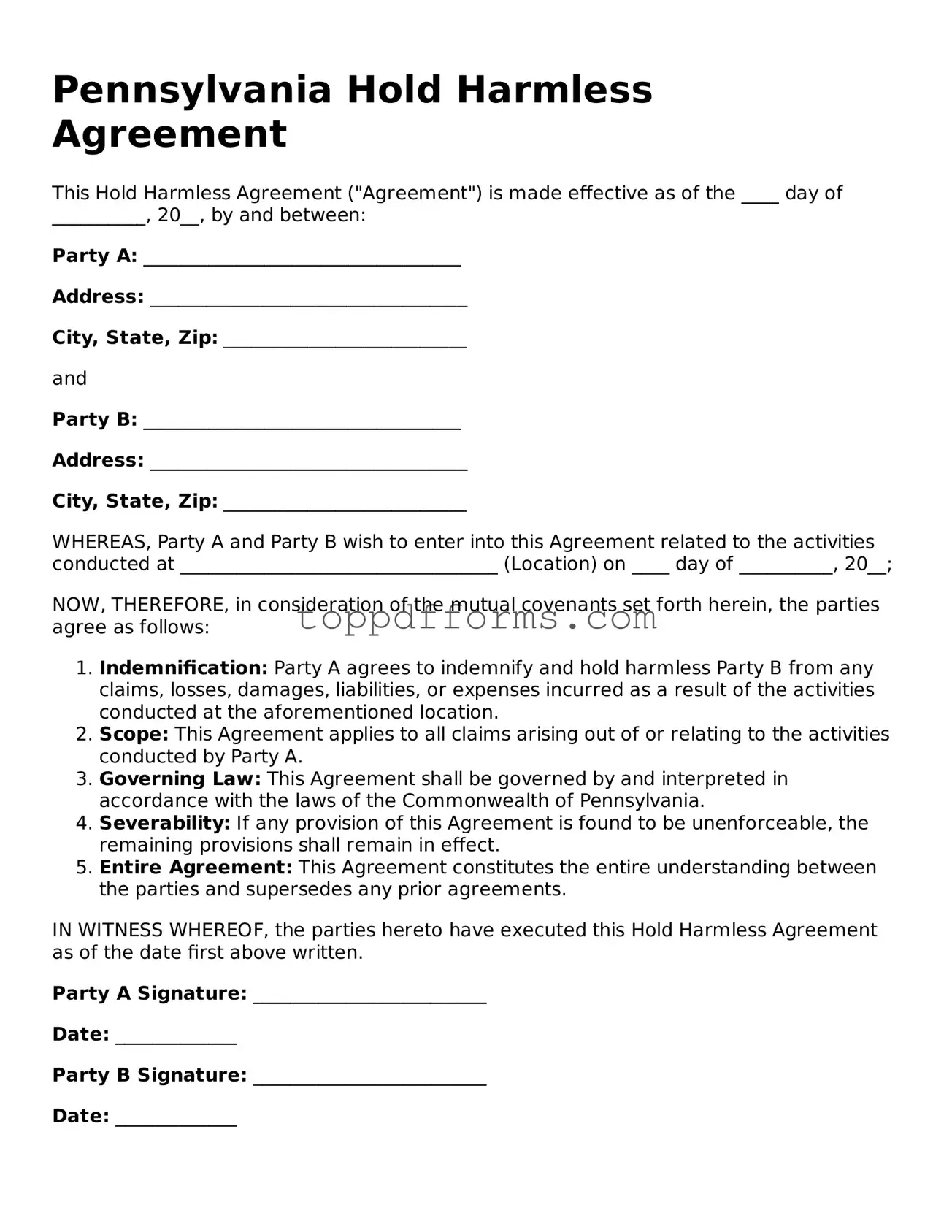What is a Pennsylvania Hold Harmless Agreement?
A Hold Harmless Agreement is a legal document that protects one party from liability or claims that may arise from the actions of another party. In Pennsylvania, this agreement is often used in various contexts, such as rental agreements, construction contracts, or event planning. By signing this document, one party agrees to assume responsibility for any potential risks or damages that may occur, thereby shielding the other party from legal repercussions. This can be particularly important in situations where activities may pose a risk of injury or property damage.
Who typically uses a Hold Harmless Agreement in Pennsylvania?
Various individuals and organizations utilize Hold Harmless Agreements in Pennsylvania. Common users include landlords, contractors, event organizers, and businesses that host activities involving participants. For instance, a landlord may require tenants to sign such an agreement to mitigate liability for accidents occurring on the property. Similarly, a contractor may ask clients to sign a Hold Harmless Agreement to protect against claims resulting from construction-related injuries. By doing so, parties can clarify their responsibilities and reduce the risk of legal disputes.
Are there any limitations to a Hold Harmless Agreement in Pennsylvania?
Yes, there are limitations to Hold Harmless Agreements in Pennsylvania. While these agreements can provide substantial protection, they cannot absolve a party from liability for gross negligence or willful misconduct. Courts may view such provisions as unenforceable if they attempt to shield a party from serious wrongdoing. Additionally, the language of the agreement must be clear and specific; vague or overly broad terms may lead to challenges in enforcing the agreement. Therefore, it is essential to draft these documents carefully to ensure they are legally sound and effective.
How can someone create a valid Hold Harmless Agreement in Pennsylvania?
Creating a valid Hold Harmless Agreement in Pennsylvania involves several key steps. First, it is crucial to clearly identify the parties involved and outline the specific activities or situations covered by the agreement. The language should be straightforward and unambiguous to avoid misunderstandings. Next, both parties must sign the document to indicate their consent. It is also advisable to have the agreement reviewed by a legal professional to ensure compliance with state laws and to address any potential legal issues. This careful approach can help protect the interests of all parties involved.
